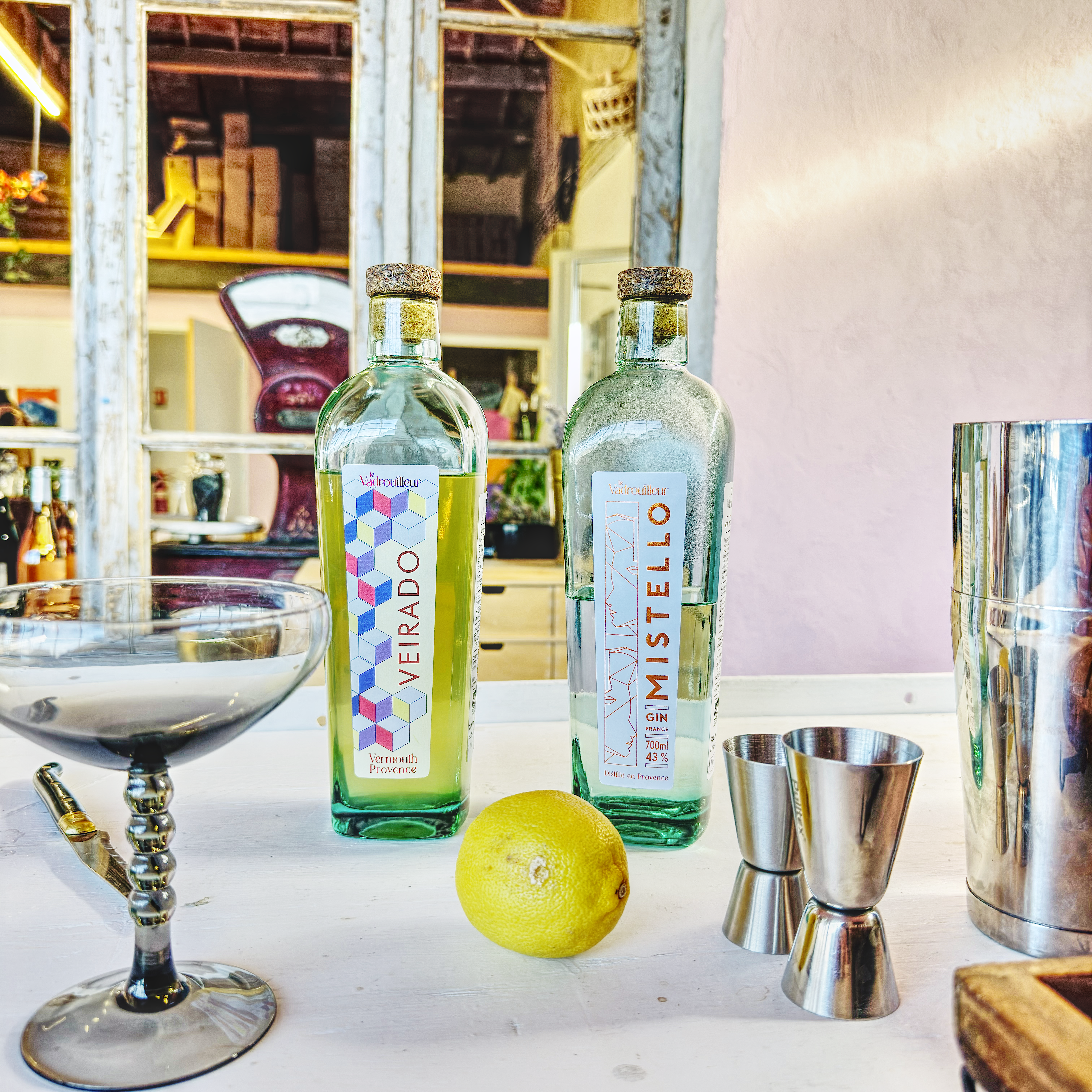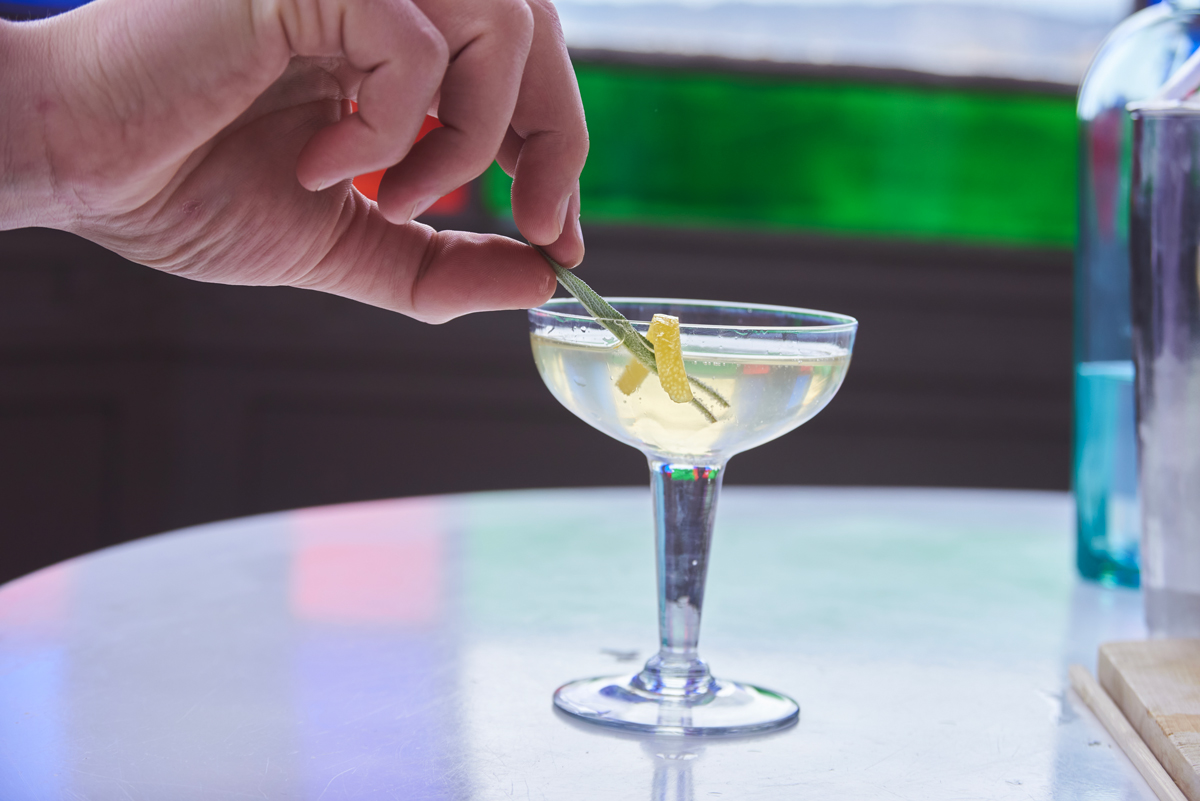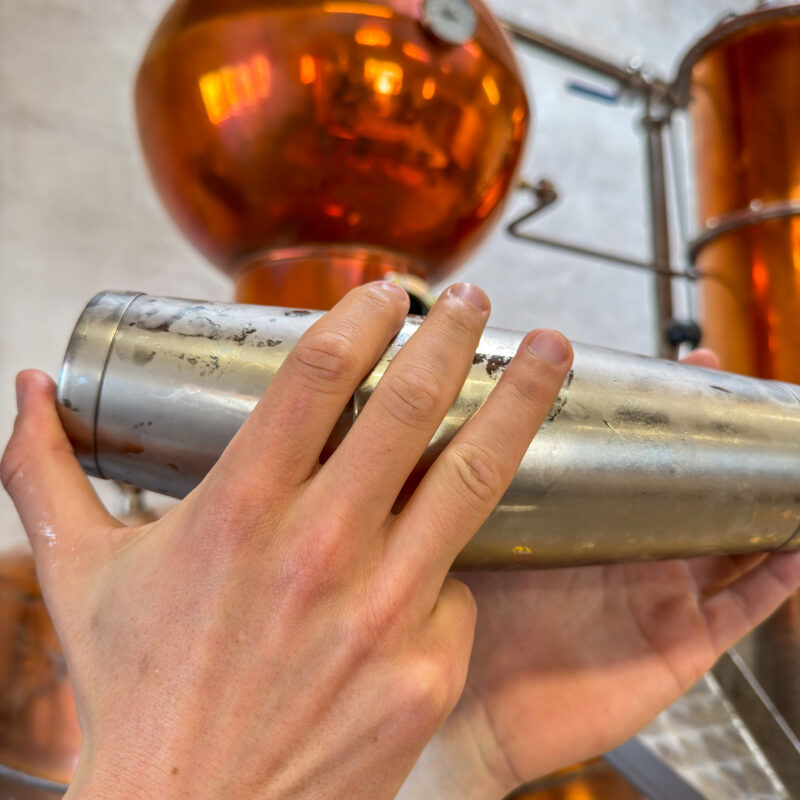This emblematic cocktail among the variety of aromatic cocktails is the source of much controversy. In fact, the provenance of this cocktail is the subject of heated debate. Contrary to what its name suggests, this cocktail does not contain Martini, but rather Vermouth and Gin.
The origins
According to some, its origins date back to 1900. The first Martini cocktail recipe appeared in Bartender’s manual and was created by Harry Johnson.
Another theory is that it comes from ‘Martinez’, a cocktail first published in 1884 in The modern bartenders guide by O.H Byron. Legend has it that this cocktail was created by Jerry Thomas, the first bartender to write a cocktail book in 1862. He is said to have been both a bartender and a gold digger in the mining town of Martinez (California).
According to the most popular theory, the Dry Martini cocktail was created in Paris in 1904, by an English bartender working in the Opéra district. The recipe for the cocktail first appeared in the book American-Bar Recipes for English and American Drinks by Frank P Newman.
Later, in 1906, Louis’s Mixed Drinks suggests using a lemon peel, while Hoffman House Bartender’s Guide of 1912 says ‘add a cherry or olive, and serve after squeezing a lemon peel over the top’.
Whatever its origins, the Dry Martini quickly established itself as an iconic cocktail during the Prohibition period in the United States (1920-1933), thanks to the growing popularity of gin at the time. In a short space of time, it became an icon of sophisticated drinks, symbolising elegance and refinement.
The method
You can make a Dry Martini using either vodka or gin. If you opt for vodka, it’s best to prepare it in a shaker (James Bond style) to obtain a fresher cocktail, but with a slightly higher dilution. On the other hand, if you choose gin, it’s best to prepare your cocktail directly in the glass using a spoon. This method ensures less dilution and maintains the temperature to reveal all the gin’s aromas.
It’s worth noting that, depending on the garnish used, a Dry Martini may take on a different name. Although usually accompanied by lemon or olive, there are now a number of variations on this classic cocktail. Some, like the Gibson, include garnishes such as onion.
The ingredients of a Dry Martini by Le Vadrouilleur
* Vermouth Veirado
* Lemon zest or olive
* Large ice cubes
Cocktail equipment
* Serving and mixing glass
* Spoon
* Strainer
The recipe
* Place the serving glass in a cool place.
* Fill the mixing glass with ice cubes. Once chilled, remove excess water.
* Add 4 centilitres of Vermouth
* Add 4 centilitres of Gin
* Cool by stirring with a spoon.
* With a sieve, retain the ice cubes and pour the cooled mixture into the serving glass.
* Finish with the garnish, either a lemon zest or an olive. It’s a question of taste, you decide!
The Dry Martini can be prepared with a generous amount of gin for a fuller-bodied flavour. You can also mix gin and vermouth, or even add more vermouth for a lighter drink. This way, you can enjoy several Dry Martinis!
TIPS FROM THE PRO
* The secret to a good Dry Martini is temperature. To make sure you get it right, put your cocktail glass in the freezer, your gin or vodka in the freezer and try to get some nice ice cubes for shaking or stirring.
* It’s also very easy to personalise the ingredients of your Dry Martini. There are two main ingredients: Vermouth and Gin.
* You can choose to go for a more traditional gin or try one with more personality, like Mistello Gin.
* The same goes for vermouth: you can choose the one you like best, Veirado Vermouth, of course.
There’s bound to be a version of Dry Martini that’s just right for you. You just have to find it!




